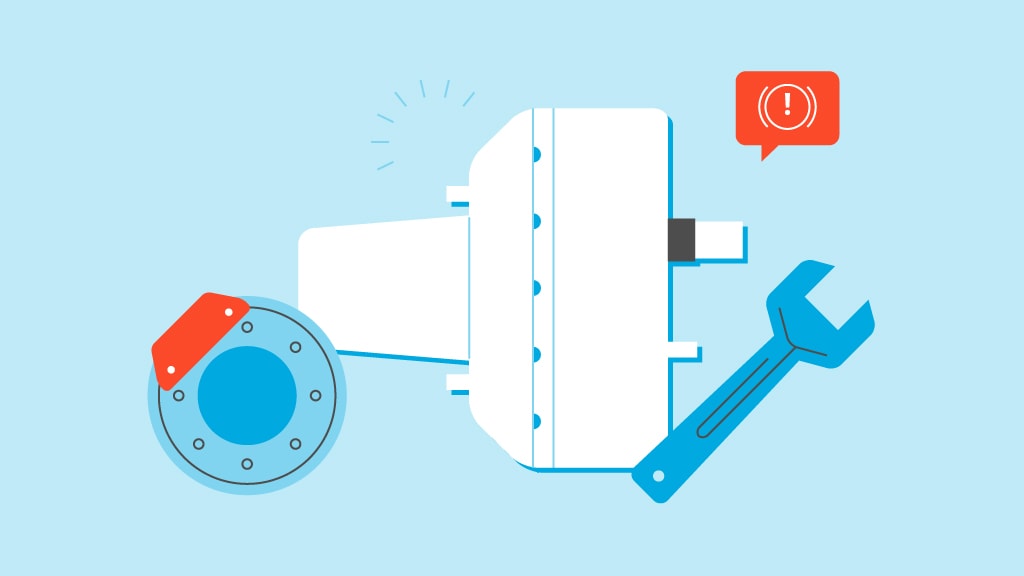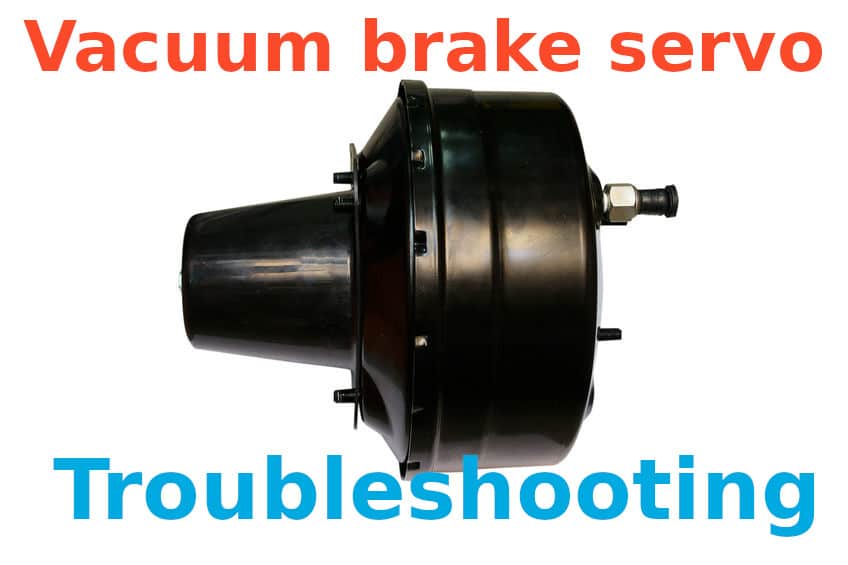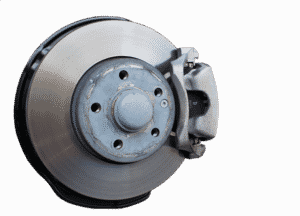
Why is the brake pedal hard to push on my car?
Modern vehicles are equipped with what old-school mechanics call “power brakes.” The system consists of a brake booster and master cylinder, or “Vacuum brake servo”. Their job is to multiply the pressure applied on the brake pedal. This enables you to modulate the brakes smoothly as you slow down. The system will also enhance braking pressure in an emergency situation.
With that being said, it is important to pay attention to the brakes in your vehicle. It goes without saying that a modern braking system will fail to work if the brake booster or master cylinder goes bad.
The brake booster is located in the driver’s side firewall. On the inside, the booster is a flexible diaphragm that is divided between the front engine side and rear driver side chambers. There is a thick and flexible rubber hose that connects the front chamber of the booster to the intake manifold. The engine will basically feed vacuum pressure inside the booster to improve the brake pedal feel.
The brake pedal is connected to a power piston or push rod that is also connected to the center of the booster. The other end of the piston is directly connected to the master cylinder and governs a series of valves. When you push the brake pedal. The rear valve and the center valve will open or close to allow pressure inside the chamber. The pressure will push the hydraulic fluid or brake fluid to the brake calipers to apply braking pressure.
Yes, the brake booster and master cylinder are complicated mechanical parts that may look simple on the outside.
Here are the signs and symptoms of a bad brake booster

1. Illuminated brake warning light on the console
This is one of the first signs of brake failure. If the brake warning light illuminates, the sensors in the braking system are detecting a malfunction. Most of the time, this will signify the system is low on hydraulic fluid. The braking system is a sealed system. If you are constantly adding brake fluid in your vehicle, it will mean the system has a leak and should be addressed immediately.
2. Leaking brake fluid
In most cases, the surest sign of a bad master cylinder is the presence of leaking brake fluid either in the engine bay or inside the vehicle, usually in the foot well. If the leak is bad, the fluid can penetrate the carpets in the driver side of the car. Pop open the hood and check the master cylinder. If there are no leaks in the master cylinder itself, check for fluid leaks in the foot well directly behind the brake pedal. If you do have a leak, make sure you replace your brake fluid!
3. Insufficient braking pressure or hard brakes
While the car is in motion, step on the brakes and observe the stopping power. If it takes longer than usual to stop the vehicle, you might have a bad brake booster or master cylinder. This also holds true if the brake pedal requires more pressure than usual to apply sufficient braking force. A stiff brake pedal is normal when the engine is not running since there is no vacuum pressure inside the brake booster. But if the engine is running and the brake pedal feels overly stiff, it will be unsafe to drive the vehicle. This can also mean there is a lot of air bubbles inside the master cylinder. Have the problem checked by a mechanic immediately.

4. Spongy brakes or sinking brake pedal

On the other hand, if the brake pedal feels too soft or spongy, it may be a sign of a bad master cylinder as well. Spongy brakes are also a result of leaks in the system. The master cylinder and push rod has rubber seals that may get worn out or damaged over time. In worst cases, the brake pedal will suddenly push through or sink towards the floor without activating the brakes itself! This is a dangerous symptom that should be addressed immediately.
5. Engine misfire or stalling when the brakes are applied
If the brake booster is worn out or damaged, it has a tendency to draw out excess engine vacuum. This condition will serve to suffocate the motor and cause misfires or stalling when the brakes are applied. If you notice this symptom, it means the diaphragm inside the brake booster is damaged and allows excess air to bypass the seals. If you notice a drop in engine idling when you apply braking pressure from a standstill, it probably means the brake booster will need to be replaced.
How to Check the Brake Booster and Master Cylinder
You can easily check the condition of the brake booster and master cylinder by following these simple steps.
- Park the car and apply the emergency brakes/hand brake.
- Open the hood and check the rubber hose from the brake booster to the intake manifold. If you find cracks, hard spots, or swollen areas in the hose, replace the hose immediately. If you see fluid leaks, it might be time to replace the master cylinder.
- Start the motor and allow to idle for five minutes. Grab a spray bottle filled with soapy water. Spray the solution along the vacuum hoses and fittings. If you see bubbles on the hoses or fittings, there is a vacuum leak in the braking system. Replace the hose or fittings if this is the case.
- Turn the engine off. Sit in the driver’s seat and pump the brake pedal repeatedly until the pedal stiffens. Continue pushing the pedal with your foot and start the motor. The brake pedal should sink slightly as you start the engine. If the pedal doesn’t sink, you might be dealing with a broken or worn out brake booster.
- Allow the engine to idle and press the brake pedal. If the idling drops significantly or if the engine stalls, there is a vacuum leak in the system.
Conclusion
The symptoms of a bad brake booster and master cylinder are hard to ignore. If you notice any or all of the symptoms mentioned above, take the car to a garage or reputable mechanic to fix the problem. Make sure you’re running some good brake fluid and your brake pads are still in good shape.

